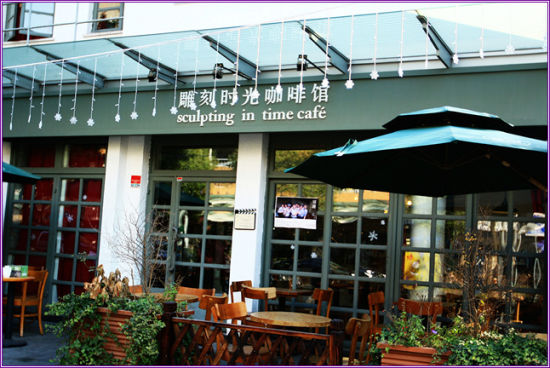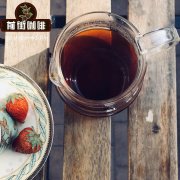A brief introduction to the origin and flavor of natural decaf coffee and Peruvian coffee beans
For information, please follow the coffee workshop (Wechat official account cafe_style)
Peru is located in western South America, with a coastline of 2254 kilometers. The Andes runs from north to south, and the mountains account for 1% of the country's area. it belongs to the tropical desert region with a dry and mild climate. Peruvian coffee is mostly grown at the foot of the Andes, where it is rich in traditional Central American top coffee beans.
Peru is a huge and diversified land for them to produce a large number of different kinds of coffee beans, Peru can produce very high-quality Peruvian coffee. In general, these coffee beans have the gloss of Central America, but they are all packaged in South American flavor. High-quality organic venues do have more rural coffee characteristics. As long as these coffee beans continue to add interesting flavors rather than weaken them. Such a cup of Peruvian coffee has all the bright and deep tastes. When a cup of ordinary Peruvian coffee is in your hand, you don't have to try to taste whether it is good or not.
Peruvian coffee beans are famous for their excellent coffee beans from Chacha Mayou in the middle and Cusco in the south. In addition, some areas in northern Peru also produce characteristic organic coffee. Organic coffee is made of beans grown in the shade of trees. Although the yield of coffee beans is not high because of the method of planting in the shade, its quality can reach the level of gourmet coffee. This is because shading trees can slow down the ripening of coffee trees, help coffee grow fully, make it contain more natural ingredients, breed better flavors, and reduce caffeine content.
Peruvian coffee is grown in a planned way, which has greatly increased coffee production. Its rich acidity and mellow smoothness are its most prominent features. Peruvian coffee has a soft sour taste, medium texture, good taste and aroma, and is an indispensable ingredient in the production of comprehensive coffee. High-quality Peruvian coffee, with strong aroma, smooth, layered, rich sweet, elegant and mild sour taste, will quietly awaken your taste buds.
Peru has a dry plateau climate running through the Andes in the west and Amazon plains in the east, with a tropical climate. The intersection of the two major landforms and climate creates a rich micro-climate with a large temperature difference between day and night. Peru and Colombia are both inherently excellent coffee paradises.
Coffee fields in the Peruvian mountains have no running water or electricity, and poor Indians have been organically cultivated since ancient times and still cannot afford to buy pesticides and fertilizers. Because of the low production cost, the price is lower than that of Mexico and Ethiopia, two organic coffee producers.
Peruvian coffee fields are mainly distributed in Cacamaca in the north, Cusco and Puno in the south, and more than 60% of coffee varieties are ancient Tibica.
Coffee producing areas:
Specific to the three coffee producing areas of northern, central and southern Peru, 70% of the coffee varieties are iron pickup, 20% are Kaddura, and the rest are Kadim and other varieties. Because of Peru's complex and diverse natural resources and rich and colorful culture, coffee produced in different regions has its own characteristics.
Peru's finest coffee is produced in Chanchmayo, Cuzco, Norte and Puno. Most Peruvian coffee is grown under natural conditions, but it is also difficult to confirm the cultivation of all coffee trees. Coffee grown under natural conditions costs 10% more than others. Judging from poverty, farmers may not have the money to buy chemical fertilizers and pesticides, but it is really difficult to confirm all the coffee.
Peruvian coffee beans are best known for their coffee beans from Chimacha Mayou in the middle and Cusco in the south. In addition, some areas in northern Peru also produce characteristic organic coffee. Organic coffee is made of beans grown in the shade of trees. Although the yield of coffee beans is not high because of the method of planting in the shade, its quality can reach the level of gourmet coffee. This is because shading trees can slow down the ripening of coffee trees, help coffee grow fully, make it contain more natural ingredients, breed better flavors, and reduce caffeine content.
Important Notice :
前街咖啡 FrontStreet Coffee has moved to new addredd:
FrontStreet Coffee Address: 315,Donghua East Road,GuangZhou
Tel:020 38364473
- Prev

I didn't lose my heart but I lost to the rent! Where should traditional coffee chains such as carving time go?
Professional coffee knowledge exchange more coffee bean information Please follow the coffee workshop (Wechat official account cafe_style) recently, the carving time announced that the Wudaokou store in Zhongguancun, Beijing had been officially closed due to rent pressure, which made the already restless coffee track make waves again. In fact, as the first generation of domestic coffee brands, carving time felt as early as several years ago.
- Next

What's the difference between Java and Manning? The taste and flavor of Java coffee java,
For information, please follow the coffee workshop (Wechat official account cafe_style). Java coffee is famous in the early years, which refers to Arabica coffee that used to be grown in Java. It has a strong aroma, low acidity and lubricated taste. When mixed with mocha coffee, Java mocha mixed coffee was once popular and became synonymous with top coffee.
Related
- What documents do you need to go through to open a coffee shop? coffee shop coffee shop certificate processing process
- How to purchase Coffee beans in small Cafe how to choose a suitable supplier for domestic Coffee supply Company
- How to drink Starbucks Fragrance White Coffee? how to make Australian White Coffee? what Italian coffee beans are recommended?
- The Story of Flora Coffee: the name of Flora Coffee Bean and the implication of the Flowers on Florna Coffee
- How much does a cup of coffee cost? How much is the profit of a cup of coffee? What is the profit of the coffee shop in a year?
- Yunnan small Coffee, known as "fragrant Coffee", introduces the characteristics of Alpine Arabica Coffee producing areas in Yunnan, China
- 2023 latest Starbucks full menu price list how much is a cup of Starbucks coffee what is better to drink the most popular hot and cold drinks recommended
- Starbucks different kinds of Coffee Price list Starbucks menu 2023 Top Ten Best drinks in Starbucks
- Starbucks Spring praise Comprehensive matching Coffee Bean theme Story Packaging implication and taste description
- The cost of a cup of coffee latte American coffee cost price and selling price

